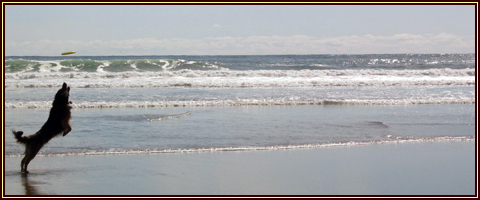Aquarium Care For Freshwater Fish
Aquarium Care for Freshwater Fish
Aquarium Care for Freshwater Fish
Freshwater fish are perhaps the easiest fish to care for in comparison to saltwater species because they are typically hardier fish. A basic aquarium set up will be required. You will need a tank, some rocks or substrate to line bottom of the tank. You’ll also need a filter, with some lighting. When choosing fish, it is weighty consequence~of large magnitude~of the essence} to make confident the fish are compatible. Not only do they need to be compatible for water temperature and P.H., but they also should have similar food requirements. Try to keep the fish relatively the same size. It has been said that if a fish is little enough to fit in another fishes mouth, that is by and large where it ends up. So don’t be discouraged if this happens. Even fish that have been housed together for several months have been known to disappear on occasion.
Freshwater fish should be fed twice daily. Feed only a miniature amount that can be consumed within the originally two to five minutes. Over feeding is a common mistake among novice fish keepers. Any excess food should be lifted in addition to a net if possible, as it will become debris in addition to soon while~in next to no time} dirty the tank. Water should be kept regulated and tested weekly. Any disparities in P.H. along with water temperature should be corrected immediacy in order to minimize stress caused to the fish.
Stress is central consequence~of super magnitude~of the essence} because it causes illness in fish. It is essential consequence~of super magnitude~of the essence} to monitor the activity along with overall well being of the fish in an aquarium. The signs of stress will be fairly obvious. Slow moving or lethargic looking fish will require a stress coat that can be purchased at a local canine animals store. Try to avoid overcrowding the tank. This should help to reduce the amount of stress caused to the fish.
Change about a third of the water in the aquarium at a time, because this type of change will cause the least amount of disturbance to the fish in addition to other inhabitants. This will need to be done every two to three weeks. Use either a bucket or a siphon to remove the water with the tank. Try to remove any loose or floating debris at this time. When adding the latest water to the aquarium, be positive that it is within approximately two degrees of the tank water. The sides of the aquarium should be scrubbed as a rule to remove an algae build up. Again be careful not to disturb the fish. Wash your hands thoroughly before in addition to after handling the aquarium. Lastly, check the manufacturer’s recommendation on filters plus change them accordingly. Filters collect any fish waste or left over food. They can’t meaning properly unless they are clean.
Introduce hardy fish to a up to date tank. These fish can withstand higher nitrite levels that are present in a topical aquarium. Choose fish such as danios, barbs, gouramis, and live bearers. Don’t add more than three to four tiny fish per week. Acclimation times vary per species, so check with your retailer before adding any other hot fish.
http://www.zdogpark.com/Dog_Breeds/Terrier_Dogs/Glen_of_Imaal_Terrier/
http://www.zdogpark.com/Dog_Breeds/Terrier_Dogs/Irish_Terrier/
http://www.zdogpark.com/Dog_Breeds/Terrier_Dogs/Kerry_Blue_Terrier/







